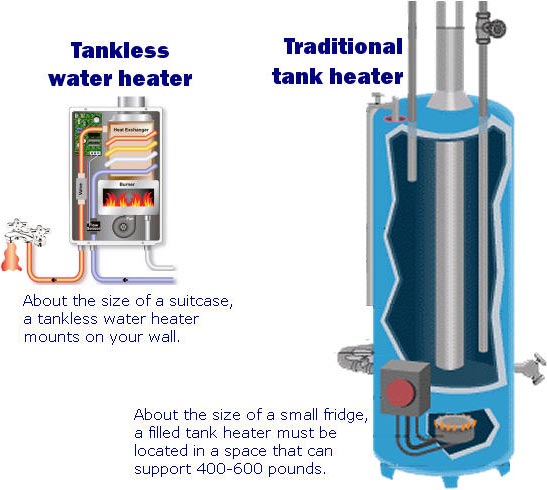Water Heater Wednesday: Tankless Water Heaters
Last week we talked about what a tankless water heater is and how it works. Today we’re going to discuss some benefits of tankless water heaters and how they can save you money.
Because of the way a tankless water heater works, it can be installed in a tight space, unlike a traditional water heater. This saves you a lot of space and is less of an eye sore. Also, since tankless water heaters deliver hot water on demand as opposed to storing hot water, they can save you a ton of energy. Another benefit is that they generally last twice as long as traditional water heaters as long as they are properly maintained.

Another great benefit of a tankless water heater is the amount of money you can save! Your up front cost for the purchase and installation can range anywhere from $2,000-$4,000. The price will depend on the size you need and which model you choose. Though initially this may sound like a lot of money, looking long term a tankless water heater will make up this cost and save you extra. Within two years, a tankless water heater will begin to pay for itself because of how energy efficient it is. The average home uses around 41 gallons or less of hot water each day. Based on this number, tankless water heaters can save you up to 34% more energy each day. A properly maintained tankless water heater can last more than 20 years….that’s a lot of savings!
Next week on Water Heater Wednesday we’ll talk about selecting the right tankless water heater for your home!
If you need help selecting or installing a new tankless water heater or maintenance help with your current tankless water heater, call us today at (678) 822-7095!

